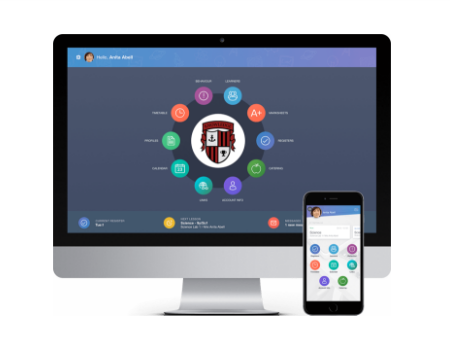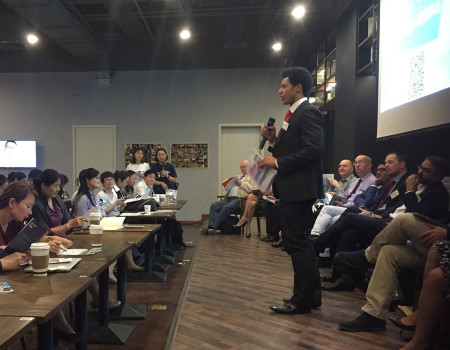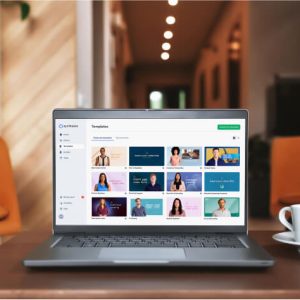Titus Learning co-founder and director Seb Francis was interviewed recently for Education Technology Magazine on the Digital Transformation of the Classroom. Here, he expands on the interview with a more in-depth look at the challenges and benefits associated with current VLEs.
What are the key differences between the Cloud and a VLE?
Over the past few years there has been plenty of discussion around cloud based repositories, such as G-suite and Office 365, vs the traditional Virtual Learning Environment (VLE), such as Moodle. Whilst there is certainly some overlap in what the two systems can provide, there are some very clear differences in terms of both functionality, and how the systems should be used.
Cloud repositories were initially introduced to allow for quick document creation, online/anytime access, simple sharing with users, and collaborative working on documents. Whilst systems such as Google and Microsoft Classroom have certainly taken steps towards creating more of a learning environment, and enabling teachers to assess students’ understanding of a particular topic, they do lack some of the more advanced assessment tools that modern VLEs such as Moodle possess.

VLEs also offer further flexibility in terms of the activity and resource types that can be created. For example, you can start with the static content created in your cloud repository, and then introduce more interactive features, such as forums/chat rooms to promote student discussion, quizzes to track progress, and interactive media resources that present the learning content in a way that’s engaging and can assesses as students work through it.
Because of this, we like to think that the discussion is not ‘Cloud or VLE’, but ‘Cloud AND VLE’, where we see the two platforms seamlessly integrated so teachers, students and parents can get the best of both worlds.
What are the advantages of using VLEs compared to the Cloud?
In addition to some of the points mentioned above regarding personalised learning and interactive content, I think there is certainly an advantage in using the VLE as a central hub for all online activity. This gives students and teachers a clear entry point for their homework, cloud repositories, and other online systems used.
Whilst the benefits to teachers and students are obvious here, we also see some great uptake by parents who are able to log in to the VLE, view schools news, see any homework their child has to complete, and even viewing data from the Management Information System (MIS) if the two are integrated. This means they’re constantly kept in the loop with their child’s progress, and don’t just have to rely upon the termly reports or parents’ evenings.

What VLEs have always done better than Cloud repositories is the assessing of students’ work. With Moodle for example, there are a plethora of options available when assessing a submission. This can start off very simply allowing the teacher to add a grade (based on a grade scale of your choosing), and adding any written feedback. You can then extend this to actually annotate the piece of work online, and attach any media files with further feedback (a recording of the teacher for example).
Finally, you can look at what the grades signify – are these working towards a learning outcome or standard, do you need to mark against a rubric, should there be any weighting against the total course? You can even run the submissions through anti-plagiarism tools for more formal assessments.
As stated previously however, we do still promote the use of Cloud repositories, and our recent integration with Office 365 means that students can actually complete their assignment/homework within Microsoft OneNote and the submission will automatically go back into Moodle for grading with all the features mentioned above available.
Why hasn’t there been an uptake of VLEs in primaries to the same extent as secondaries – and are primaries missing out?
The uptake amongst primary schools in comparison with secondaries has always been a little lower, and I think this is mainly linked to why and how the platforms are being used. Whilst the same system may be suitable for both primary and secondary (we have a number of 3-18 school customers), they certainly shouldn’t be used in the same way.
Secondary schools will get a lot of benefit from VLEs in promoting personal/home learning, allowing access to resources anytime, and tracking students’ progress. Where we’ve seen great success in primary schools is very much involving the parents with the learning process. Teachers may upload resources to the platform that parents can access at home and work through with their children, or perhaps they may have a class blog that shows work done in class which can then be viewed by parents.
Of course as the students move towards their final years of primary school, they will have become much more computer literate, and can start gaining direct benefit from the features that the VLE offers. Whether this be viewing and completing homework or accessing learning resources.
It’s also key to look at the types of activities that are used. For example, we have a content creation tool that has questions and quizzes, but instead of being in a static form, they’re placed within a game for students to complete. This will of course prepare your students for secondary school and the systems that will no doubt be in place.
There are definite benefits to primary schools using VLEs, and working alongside a third part should certainly help to identify how you can get the most out of it.
What are the challenges and benefits of using VLEs?
As we’ve already touched on a number of the benefits of using VLEs, I’ll focus on some of the key challenges, and more importantly how can schools overcome these challenges.
Having been fortunate enough to speak and work with 100s of schools around the globe, it’s apparent that one of the most common challenges is the implementation of a new VLE. The same is also true for a range of other systems, and new processes in general. When we talk about implementation we’re referring to the internal marketing and launch of the platform, the initial setup and customisation of the VLE, and staff onboarding and training.
Teachers have an awful lot on their plates as it is, so to introduce a new system is not always welcomed with the enthusiasm you may hope for. Because of this it’s vital to show how this will directly and immediately benefit the teachers – whether this is saving time through the use of automation, shared resources, and self-marking assessments, or helping them achieve their ultimate goal of ensuring students get the best possible education outcomes.
Each school should undertake careful planning to ensure these messages can be communicated clearly, and if you’re working with an external partner to provide the VLE, then they should be in a position to assist with this.

It’s also vital that you plan how the system is intended to be used from day one. Many schools try to run before they can walk, and then struggle to get the user adoption they expected when the system is too complex.
Again, working alongside an external partner, they should assist with the VLE setup and carefully select which features and functionality should be initially available, and introduce new functionality at certain milestones as teachers become familiar with the platform. These releases should sit alongside a staff training and development plan.
One final challenge can be integration with other solutions. Staff, student and parents can now be expected to use a handful of different systems for different purposes, whether that be the VLE, Cloud repository, MIS, and even systems that manage parents evenings and room bookings.
As we have to use more and more systems, we don’t want the login and management process to become harder. Therefore, you should look to see which integrations are available for synchronous logins, and user management.
What do VLEs offer institutions that Cloud-based solutions can’t?
This is a hot topic for us right now and something we’re encouraging with our customers. The beauty of VLEs such as Moodle is that you can restrict access to certain resources, dependent on a student’s progress. The ability to create these individual learning paths not only leads towards a personalised learning experience, but can also support the gamification of courses which we’ve seen to have a great impact on student engagement.
For example, a teacher may create an assignment or quiz within the VLE. Student A (let’s call him Jimmy) may get 65%, Student B (we’ll call her Lydia) may get 95%. In this case, we would want Jimmy to do further revision on this topic, so with content that the teacher has already uploaded, the system would direct Jimmy to complete this work before progressing to the next step.
Lydia has shown a very good understanding of the topic and so we may want her to complete a more advanced piece of work within this module, or perhaps we reward her with an online badge/certificate, and allow her to move on to the next topic.
All of the above progress is obviously tracked and recorded within the online gradebook, and so teachers and parents can constantly view the progress and be made aware if a student is struggling and needs further assistance.
For more information on how we’re helping schools and educational institutions around the world implement effective e-learning strategies, you can contact our team here, or view case studies of our recent work:
- Wellington College International Tianjin, China
- Nord Anglia Education, Global
- Guiseley School, UK
- International School of Brunei, Brunei
- International School of Bremen, Germany






